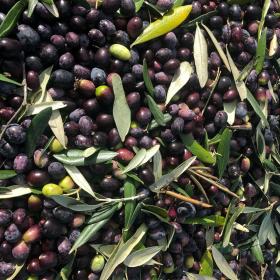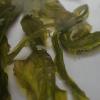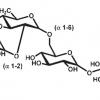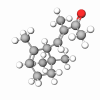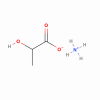Olivoyl Hydrolyzed Wheat Protein (Olivoyl Glutinate) is a completely vegetable surfactant combining the exceptional fatty acid profile of Mediterranean olive oil (around 85% of unsaturated fatty acids and vitamin E) with vegetable proteins, extracted from wheat by gluten hydrolysis. The gluten corresponds to the proteinic part of the wheat and is the nitrogen reserve used by seeds during germination for growth and cell multiplication. The nitrogen group is also an important substantive agent for hair conditioning and restructuring.
Essential fatty acids and proteins allow us to achieve a new molecule having interfacial properties and assuring perfect compatibility with the human body (experimented with a high tolerance for skin and high substantivity for hair) and with the environment (high biodegradability).
From the condensation reaction between the amino group of the hydrolyzed wheat proteins and the carboxyl group of the fatty acids of olive oil, it is possible to prepare an amide showing the surfactant's structure I. Olivoyl Hydrolyzed Wheat Protein is based only on vegetable molecules with a complete absence of chemical Impurities (no ethylene oxide or sulfate).
The chemical structure of Olivoyl Hydrolyzed Wheat Protein shows a strong potentiality as a middle detergent for baths, shampoos, and personal hygiene cosmetics, with an interesting dirt removal mechanism. The fatty acid part (unsaturated fatty acid) has a strong affinity with lipophilic compounds. The grafted peptides, very polar, have a strong affinity for the aqueous components. The dirt is completely removed from the skin which results clean, smooth, hydrated, without tension and irritation.Cosmetic uses
The green surfactant from olive oil and gluten proteins is a new generation of raw materials for rinse-off personal washing. products. It is a surfactant, with all the properties of anionic (foam, cleansing activity, easy way to formulate, stability at large p1-1 range) but with an excellent skin feel. The cleansing mechanism is very mild for the skin and for the environment; an example of a new generation of natural cosmetic products. When used in rinse-off products, the consumers report that their skin feels supple, soft, and clean, the hair lustier, healthier, and easier to comb.
Skin detergents
The perfect biocompatibility and the detergency action make this product an ideal surfactant to formulate face cleansers, anti-acne products, and make-up remove lotions at physiological pH (5.5-6.0), for normal, dry, and sensitive skin.
Hair detergents
With lipo-amino-acids as secondary surfactants (they are compatible with anionic, amphoteric, and cationic surfactants), it is possible to formulate a large range of shampoos (anti-dandruff, for dry hair, chemical-treated hair, daily shampoos, baby shampoos) with a good detergent and conditioning activity, from acid to neutral.
Body products
The good cutaneous tolerance of the Olivoyl Hydrolyzed Wheat Protein permits it to qualify as a gentle surfactant, while the strong detergent and foaming abilities remain. It is particularly adapted to formulate, as a primary surfactant, bath products, and shower gels.Particularly for after-sun shower gels, when the skin is very sensitive and irritated. Mother's important need for a personal detergent is to clean the aged skin which is very thin, reactive, rugged, and dry. For elderly people, the use of natural detergents, such as Olivoyl Hydrolyzed Wheat Protein, keeps the skin smooth and hydrated.
Safety profile
Lipoaminoacid surfactants are non-comedogenic, biodegradable, and are nontoxic for the environment. The irritation tests (modified Draize tests) on the panel of volunteers with the application of the concentrated product on the skin areas, declared that the ingredient is non-irritating.
